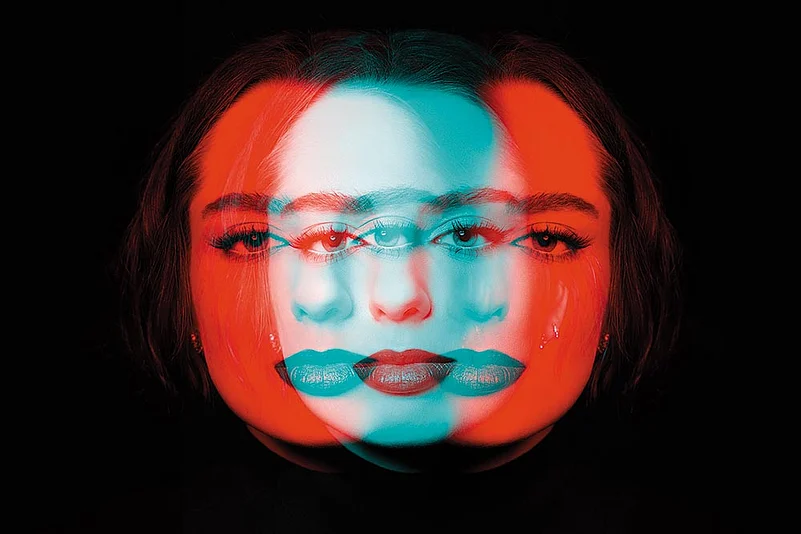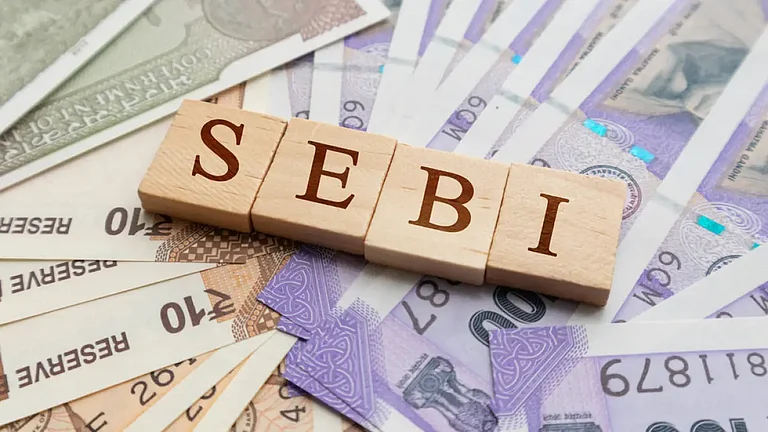In many ways, the year 2023 was a springboard for artificial intelligence, giving it a thrust it had not known before. Deep learning captured everyone’s imagination with advancement in generative artificial intelligence (GenAI). But even as the world marvelled at the finetuning of GenAI models, it gasped in horror when deepfake, a subset of GenAI, started making headlines for all the wrong reasons.
A portmanteau of deep learning and fake, deepfake, or synthetic media, uses technology to create fake content, which is almost indistinguishable from the original, by manipulating images and videos. Last year, a host of celebrities, including Rashmika Mandanna, Alia Bhatt, Priyanka Chopra Jonas and others, were targeted by deepfakes, sending alarm bells ringing on its unethical use, including to cause damage to reputation and spread misinformation.
World over, more than 90% of deepfake videos are porn. In its study titled 2023 State of Deepfakes, Home Security Heroes, a team of online experts, found that 95,820 deepfake videos were online in 2023, of which 98% qualified as pornography. However, while the scenario is scary, it would be injustice to this technology to look only at its darker side.
How Deepfake Works
The deepfake technology uses two algorithms—generator and discriminator—which learn from each other to create new images or videos. Divyendra Singh Jadoun, founder of synthetic media company The Indian Deepfaker, explains, “To make deepfakes, we need two things—source data and destination data.” In the context of a person’s deepfake, source data refers to the details of the person whose deepfake is being created, while destination data refers to information about the person on whom it is to be projected.
Based on the data, the generator creates fake content. The discriminator detects if it is fake or real. Together, they form generative adversarial networks (GANs). Meghna Bal, head of research at Esya Centre, a technology think tank, explains, “The generator tries to create an image or video that is so realistic that the discriminator cannot tell if it is real or fake. The discriminator keeps getting better at identifying real from fake and, in response, the generator keeps improving its fakes.” This back-and-forth continues until the generator becomes good at creating convincing deepfakes and fooling the discriminator, she adds.
Soumen Datta, partner, digital transformation at BDO India, a business and management consulting firm, says, “GANs and autoencoders play key roles, while image and video editing software like Adobe After Effects enhance results.” He adds that cloud computing services, such as Amazon Web Services or Google Cloud Platform, are sometimes used for the heavy computational requirements of training deepfake models.

Harnessing the Potential
The business potential of deepfake technology is supported by the current use cases in areas like advertising, entertainment, politics, education, etc. Communications agency Ogilvy India bagged awards for its Shahrukh Khan-My-Ad campaign with Cadbury Celebrations, which was made using deepfake technology for the Diwali season in 2021. It allowed small businesses to make personalised videos in which the actor would appear to promote their stores.
Ahead of the Delhi elections in 2020, the Bharatiya Janata Party circulated deepfake videos of its candidate Manoj Tiwari in English and Haryanvi; his original one was in Hindi. This helped him reach out to a wider voter base. For a country like India, where dialects change every few hundred kilometres, this presents a huge opportunity for creators of AI-powered political campaigns. The Indian Deepfaker is working on real-time translation of speeches of politicians and personalised messaging to internal party workers.
Deepfake technology can also allow one to send personalised messages to many people at the same time. Ankur Warikoo, an internet entrepreneur and content creator, took the help of Rephrase.ai, a Bengaluru-based AI start-up, to create a digital avatar of himself. He says, “I used it as a gratification tool for students buying my courses, sending them a personalised ‘thank you’ video with their name.”
Deepfakes can also be used to create educational videos that use simulations to make learning more interesting and engaging. Jadoun gives an example: “If Albert Einstein teaches physics concepts to students, it will be much more engaging.”
He says he has been catering to Indian clients such as advertisement agencies and production houses since 2023. He charges Rs 3 lakh to Rs 5 lakh depending on the projects. Personalised gifting segment has also benefitted from the technology. “Our initial customer base was overseas clients,” says Jadoun. They account for most of his personalised product offerings. “These projects included video gifts where we swapped their faces on to their favourite actor or singer and digital avatars of deceased person wishing family members on specific occasions,” he explains. For such projects, he charges between $300 and $999 each.
Asked about foreign clients preferring his company, Jadoun points to the cost factor. “Foreign clients preferred The Indian Deepfaker as other companies were charging $10,000 at that point of time. So, we were the cheapest with good quality results,” he says.
Pointing to the revolution that AI has brought in, Ishan Sharma, co-founder of Noida-based Dubpro.ai, says, “Back in 2020, when we started, the words like generative AI and synthetic media were virtually non-existent. But with the onset of companies that work with audio and text manipulation, this field has grown enormously, and we are only at the beginning of this technological revolution.” He calls it a revolution that could bring equality of opportunity to every viewer of content “as the content can now be translated and produced in a highly personalised way”.
“Investment has been notable, with both private and public funds contributing to research and development. This investment is across research and development of deepfake creation technologies, enhancement of detection and mitigation tools and the exploration of applications in entertainment, marketing and cybersecurity,” BDO India’s Datta says. He adds, “The financial landscape of the deepfake industry continues to evolve, with new developments, investments and revenue streams shaping its future.”
A Supportive Market
India-specific figures on deepfake are hard to come by. However, global data suggests that the market for this segment is deep. The global AI voice cloning market size was valued at $1.45 billion in 2022 and is expected to reach $1.92 billion in 2023, according to a report by Grand View Research, a market research and consulting company. The study expects the market to grow at a compound annual growth rate (CAGR) of 26.1% from 2023 to 2030. Another study, by market research and business consulting company 360iResearch, states that the synthetic media market size was estimated at $2.23 billion in 2023 and expected to reach $2.50 billion in 2024. By 2030, it is expected to reach $5.15 billion at a CAGR of 12.65%.
According to market intelligence company CB Insights, synthetic media companies worldwide have attracted over $1.5 billion in investments since 2016. Moreover, venture capital funds invested $187.7 million in start-ups that develop deepfake technologies in 2022, up from just $1 million in 2017, data from research firm PitchBook suggests.

Deepfake Landscape
A lot of platforms have come into the space, making the technology easily accessible to the masses. Stable Diffusion by Stability AI, Midjourney and Open AI’s Dall-E are some of the popular platforms that help in generating images from prompts.
Elaborating on the ecosystem of deepfake creation, Gaurav Sahay, practice head, general and corporate, at Fox Mandal & Associates, a law firm, says, “Some of the commonly used tools and techniques employed are open-source machine learning frameworks such as PyTorch for creating neural network models. FaceSwap uses pre-trained models to swap faces in videos. DeepFaceLab supports various algorithms for face swapping and reenactment.”
Dubpro.ai, formerly known as Deepsync Technologies, provides seamless dubbing in five different languages. Utah-based company Murf.ai, founded by Ankur Edkie, Sneha Roy and Divyanshu Pandey in October 2020, offers customers the option to create high-quality voice clones of an actor in minutes. Kroop.ai, a Bengaluru-based synthetic data solution company, helps its clients in hyper-personalisation, creates product explainer video for advertising and makes digital news anchors. Unscript.ai is another Bengaluru-based deep-tech company for delivering personalised videos to its clients like Hindustan Unilever Limited and Bombay Shaving Company.
Detection: The Next Frontier
With the growth in deepfake creation, detection has become an emerging area for business. According to global research firm HSRC, the market for deepfake detection stood at $3.86 billion in 2022 and is set to expand at a CAGR of 42% through 2026.
Kroop.ai, apart from making deepfakes, also helps in its detection. Intel’s FakeCatcher is another deepfake detection platform. Sahay says, “Various technology companies have been involved in developing tools, software or services related to deepfake detection, prevention and mitigation such as Deepware Scanner, Deep Instinct, Microsoft, Cogniac Corporation and Truepic.” These platforms utilise deep learning technology to scan the deepfake content.
Atul Rai, co-founder and chief executive officer of Staqu Technologies, who is also building a deepfake detection model, says, “We generate fake photos and then we train the AI GAN model, where we try to make it so strong that it does not make any error in identifying real versus fake.”
Sahay of Fox Mandal & Associates says, “Companies are increasingly aware of the potential risks associated with deepfakes and may invest in technologies to detect and prevent their misuse.”
In a world plagued by fake news and misinformation, it is important for deepfake start-ups to self-regulate and take additional care while creating such content. Since the algorithms need huge amounts of data to finetune fake content, data protection laws are required more than ever to cut off illegal access to sensitive data. Meanwhile, the IT sector must talk about and show the brighter side of this disruptive technology more often to ensure that it does not get lost in the shadows.



























